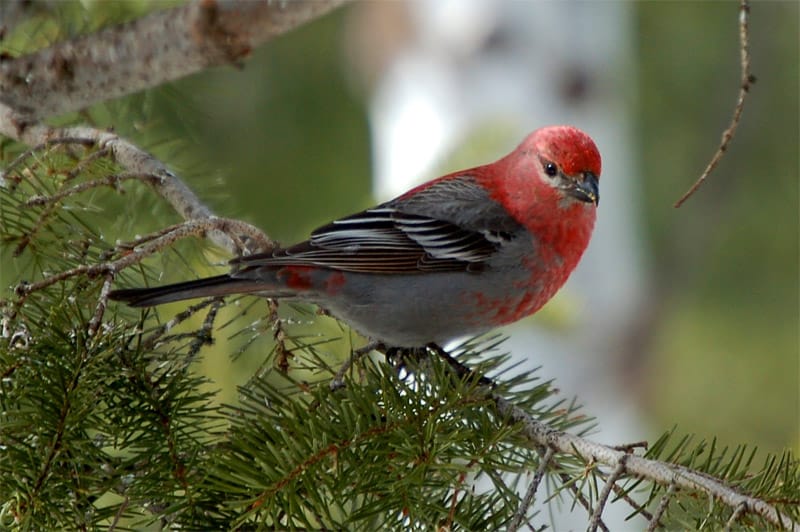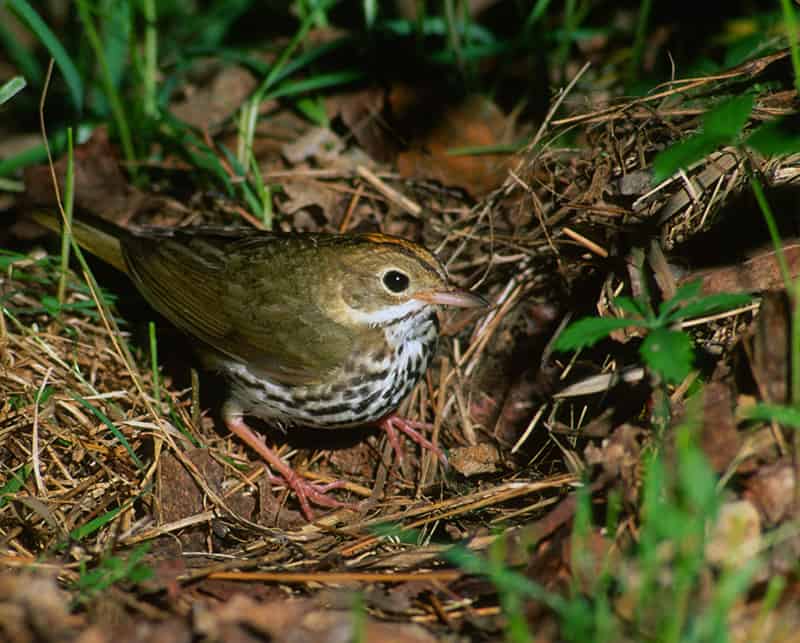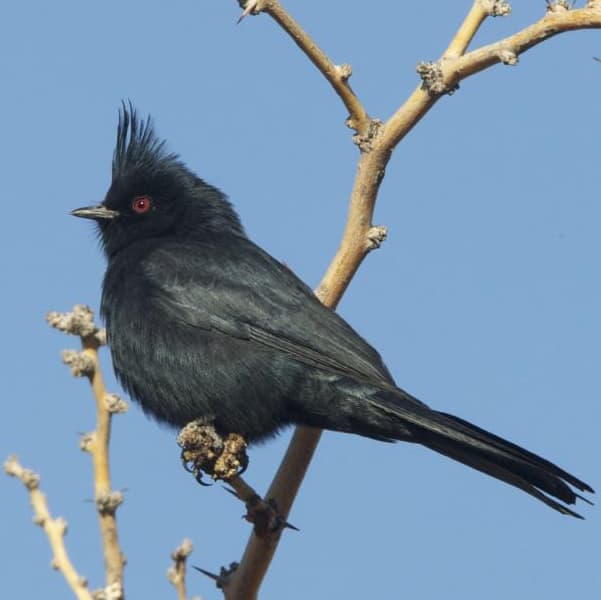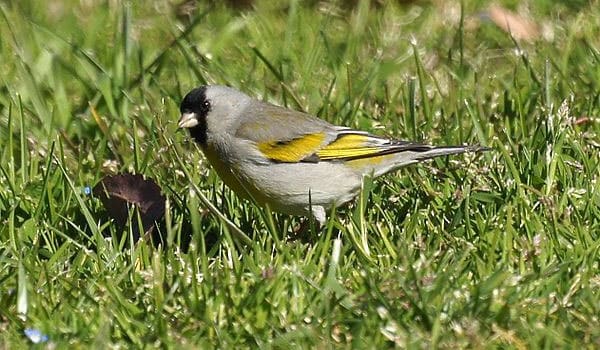Look for
The pine grosbeak is a large, stout finch with a short, heavy bill and a long, black tail. The male pine grosbeak’s head and back are a striking reddish-pink that spreads down onto its breast and belly. Its flanks and rump are gray, while its wings are black with two white wingbars. Female and immature pine grosbeaks are a more muted gray throughout with highlights of orange or yellow on the head and rump.
Listen for
The pine grosbeak’s song is series of flute-like, warbling notes that rise and fall sporadically in pitch. The call lasts for several seconds and sometimes varies in pattern: twee-whew-tee-twee-whew. Sometimes it imitates other birds.
Find it
The pine grosbeak breeds coast-to-coast in northern Canada, from Alaska to Labrador and Newfoundland. It also breeds farther south in the U.S. West, particularly in the Rocky Mountains region, and in high-elevation forests in the Southwest. It breeds in spruce and fir forests, especially in open, mountainous regions. In the wintertime, pine grosbeaks don’t migrate far: Those breeding in the far north head south into the northern tier of states. On its wintering grounds, it can be found in deciduous trees as well as various conifers.
Diet
The pine grosbeak feeds primarily on plant material including seeds, berries, and buds from various trees including maple, birch, spruce, and pine. On occasion it will also eat insects, and sunflower and mixed seeds from backyard birdfeeders. The pine grosbeak forages by walking along tree branches or on the ground, picking up food as it finds it.
Nesting Behavior
The pine grosbeak builds its nest in a coniferous tree, usually a spruce or fir, on a straight, sturdy branch typically 4 to 15 feet above the ground. The female builds the nest, a loose, bulky open cup of twigs, rootlets, and grass, then lines it with moss and finer plant materials.
She lays two to five eggs that are a light blue with dark spotting. She alone incubates the eggs for 13 to 14 days until hatching. Both sexes care and feed the young for two to three weeks before they leave the nest.




